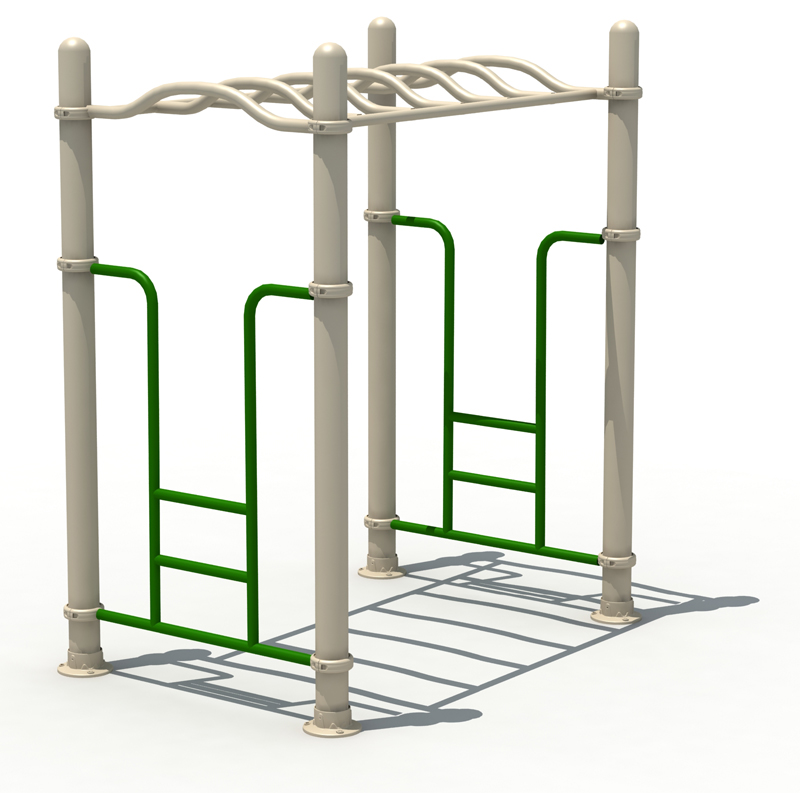Upper body equipment is designed to help children develop strength in their arms, back and core. Young preschool children may have difficulty using upper body devices because they have not yet developed the necessary strength or coordination. Therefore, upper body equipment is generally intended for children 4 years and older. The following guidelines pertain to children ages 4-12.
The most common upper body equipment is monkey bars, overhead rings, sliding poles and chin up bars. To ensure children’s safety there is code that covers the spacing of handholds, platform access, equipment height and grip diameter.
Horizontal (overhead) ladders, also known as monkey bars, build upper body strength as children move from rung to rung using only their hands. They are designed to allow children to transfer from one end of the ladder to the other by gripping a series of handholds.
Center-to-center spacing of horizontal ladder rungs should be:
- Greater than 9 inches to prevent entrapment
- Pre-school age (4 and 5 years): no more than 12 inches
- School-age (6 to 12 years): no more than 15 inches
Overhead rings feature handholds that swing during use. As the gripped ring swings through an arc, the distance to the surface of the next ring is reduced. Therefore, the recommendations for spacing distance between rungs for horizontal ladders do not apply.
If overhead swinging rings are suspended by chains, the maximum acceptable length of the chains is 7 inches.
For both horizontal ladders and overhead rings
The first handhold:
- Should not be placed directly above the platform or climbing rung used to mount or dismount. This minimizes the risk of children hitting rigid access structures if they fall from the first handhold.
- When access is by a platform, the horizontal distance out to the first handhold should be no more than 10 inches.
- For access by climbing rung, the distance should be between 8-10 inches.
Maximum height of horizontal ladder or overhead rings (distance from protective surface to center of the grasping device):
- Pre-school age (4 and 5 years): 60 inches
- School-age (6 to 12 years): 84 inches
Maximum height of access/dismount device above the protective surfacing:
- Preschool-age (4 and 5 years): 18 inches
- School age (6 to 12 years): 36 inches
Sliding poles require both upper body strength and coordination to successfully complete the activity. Once the child makes an attempt to slide down, there is no way to stop. If a child does not possess the necessary skill level, he will fall. Therefore, vertical sliding poles are not recommended for toddlers or pre-school age children.
- The horizontal distance between a sliding pole and any structure used to access it should be between 18-20 inches
- Upper access should be on one level only
Chin-up bars are heavy duty bars used for hanging or for a strength workout. They can be used by children or adults and installed at various heights.
- Rungs, bars and other means of hand support should have a diameter or maximum cross section between 0.95 and 1.55 inches.
- A diameter or maximum cross section of 1.25 inches is preferred to achieve maximum grip strength and benefit the weakest children.
With attention to detail, upper body equipment can provide an excellent level of challenge and fun while developing strength and coordination.
About us
Contact Trassig before you build your playground. We can help with Risk Management Consulting and ASTM Compliance, review your plans and ensure that your playground is built to NPCAI standards, and also review the accessibility of your design and help you become ADA compliant. With our knowledge and expertise your playground will challenge your target audience and pass inspection.

